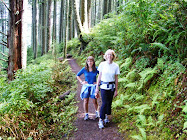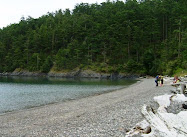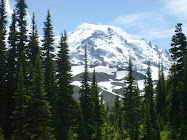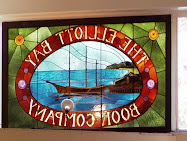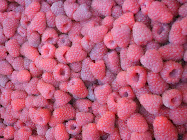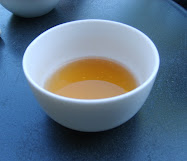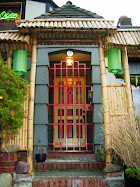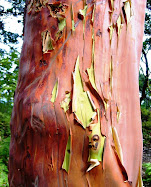 This summer I've been knocking off some of what I call the "greatest hits" hikes here in the Pacific Northwest: über popular hikes that draw the crowds and, for that reason, have kept me away.
This summer I've been knocking off some of what I call the "greatest hits" hikes here in the Pacific Northwest: über popular hikes that draw the crowds and, for that reason, have kept me away. But this summer I've relented. Never say never, right? And of course there are reasons these hikes appeal to so many, like the gorgeous waterfalls at scenic Wallace Falls State Park just outside Gold Bar, Washington, a short skip off US Highway 2 north of Seattle.
So I grab a friend and head to the hills. The Cascade foothills, that is, where Wallace Falls is situated. The drive is less than an hour from north Seattle where I live, and we get there early enough on a weekend morning to beat the thickest crowds and get a parking space in the big, paved lot.
You know a trail is popular when there are flush toilets and a gift shop at the trailhead selling coffee mugs and T-shirts. Note to those who don't live here or are new to the region: This is not normal!
Our hike begins with a quarter-mile stroll under power lines until the trail turns into lush woods, where we're greeted by some words to ponder by William Wordsworth. I think every good hike should start with some poet's musings.
The verdant forest setting continues along this well-maintained and relatively easy trail all the way to the Upper falls. Think many shades of green and lots of rushing water.
This trail features a well-tended trail, picnic shelters, wooden bridges and walkways, and protected viewpoints along the way up to the Middle and Upper falls.
For the first portion of the hike, the trail meanders along the Wallace River, then climbs via easy switchbacks to the viewpoints. While the crowds weren't too evident when we began, one trail runner passed us twice on his multiple loops running up and down the trail. Dude is hardcore.
 |
| This guy passed us on his second and third loops up and down the trail. |
Continuing upwards for another half-mile or so over beautifully graded trail (thanks Washington Trails Association volunteers!), we then reach the viewpoint for the biggest and most impressive, the Middle falls. Needless to say, this hike is at its best in spring and early summer and on rainy days.
Some stop here, but it's definitely worth it to head up to the next viewpoint above the Middle falls and to see the Upper falls. And for more sweat-inducing exercise.
 |
| View back down the Wallace River gorge from top of Middle falls. |
 |
| Kids, don't do this at home...or anywhere! |
As we top out near the Upper falls viewpoint, the undergrowth in the forest is much more sparse with the higher elevation (above 1,500 feet).
 |
| While this little teepee shelter is cute, it didn't have much room inside. |
 |
| Dogs are allowed on state park trails on leash. |
 |
| Salal berry blossoms along the trail. |
Interesting factoid: The name Wallace is not derived from some Euro-American settler. Rather, the lakes, river, and falls are named after an Anglicization of the local American Indian Coast Salish name "Kwayaylsh." Joe and Sarah Kwayaylsh, members of the Skykomish tribe, were the first homesteaders in the area.
When You Go
If you can, go on a weekday to avoid the weekend glut of people on the trail. Also, a Washington State Discover Pass is required for parking in the lot at Wallace Falls.
Driving Directions: From Everett follow US 2 for 28 miles east to the hamlet of Gold Bar. Just before milepost 28, turn left onto 1st Street (signed for Wallace Falls State Park). Proceed for 0.4 mile to a four-way stop. Turn right onto May Creek Road and continue for 1.5 miles to Wallace Falls State Park and the trailhead (elevation 300 feet).































































